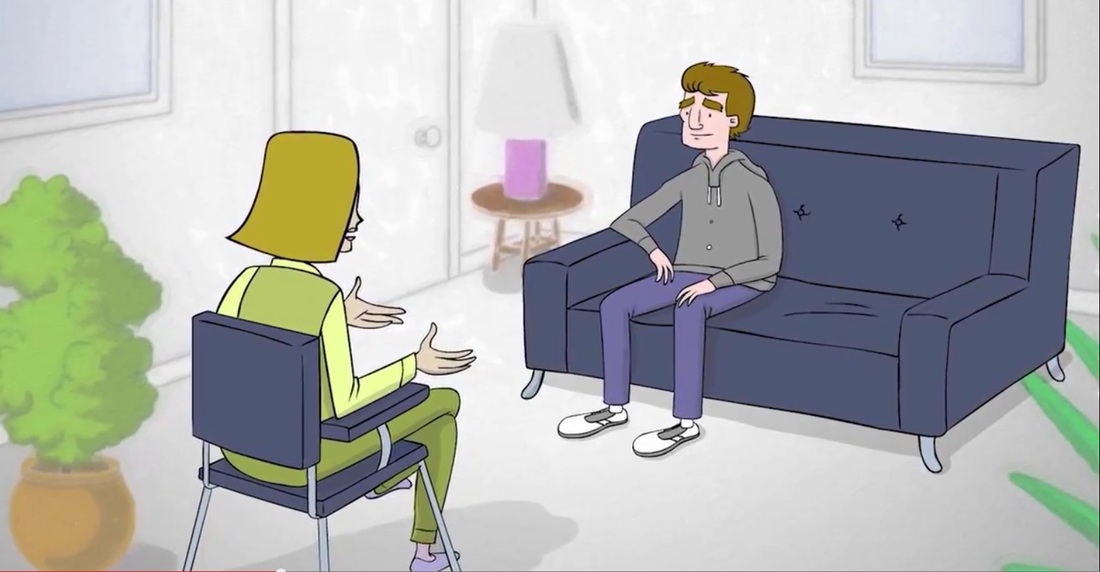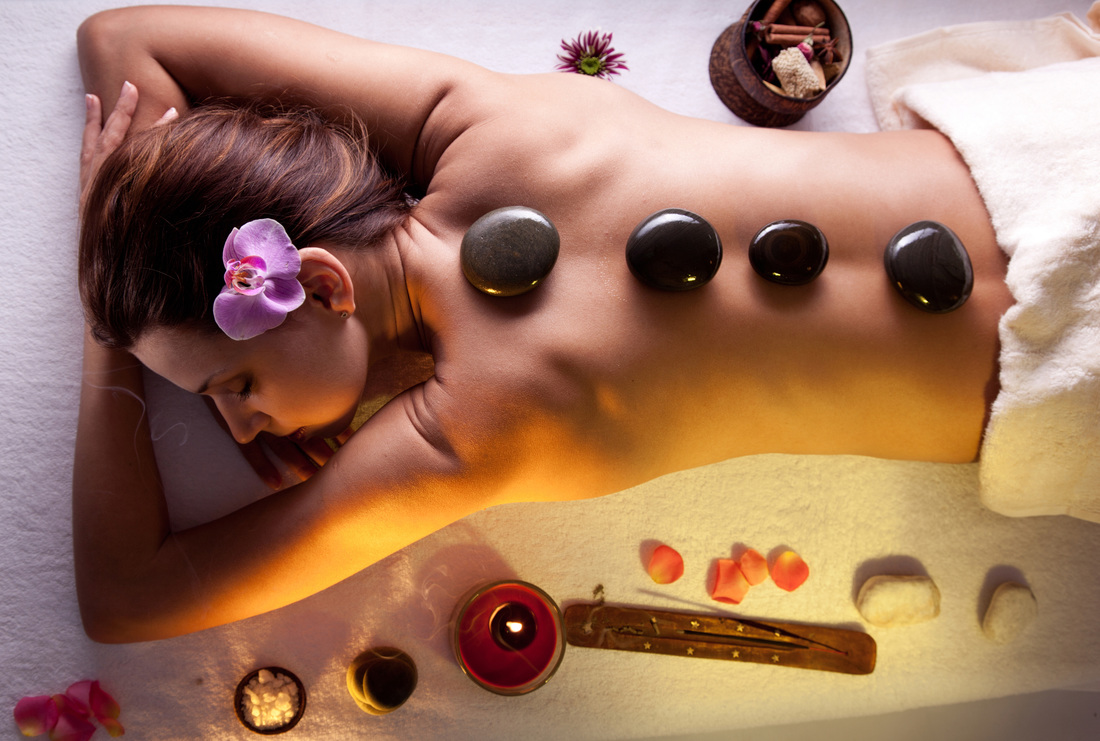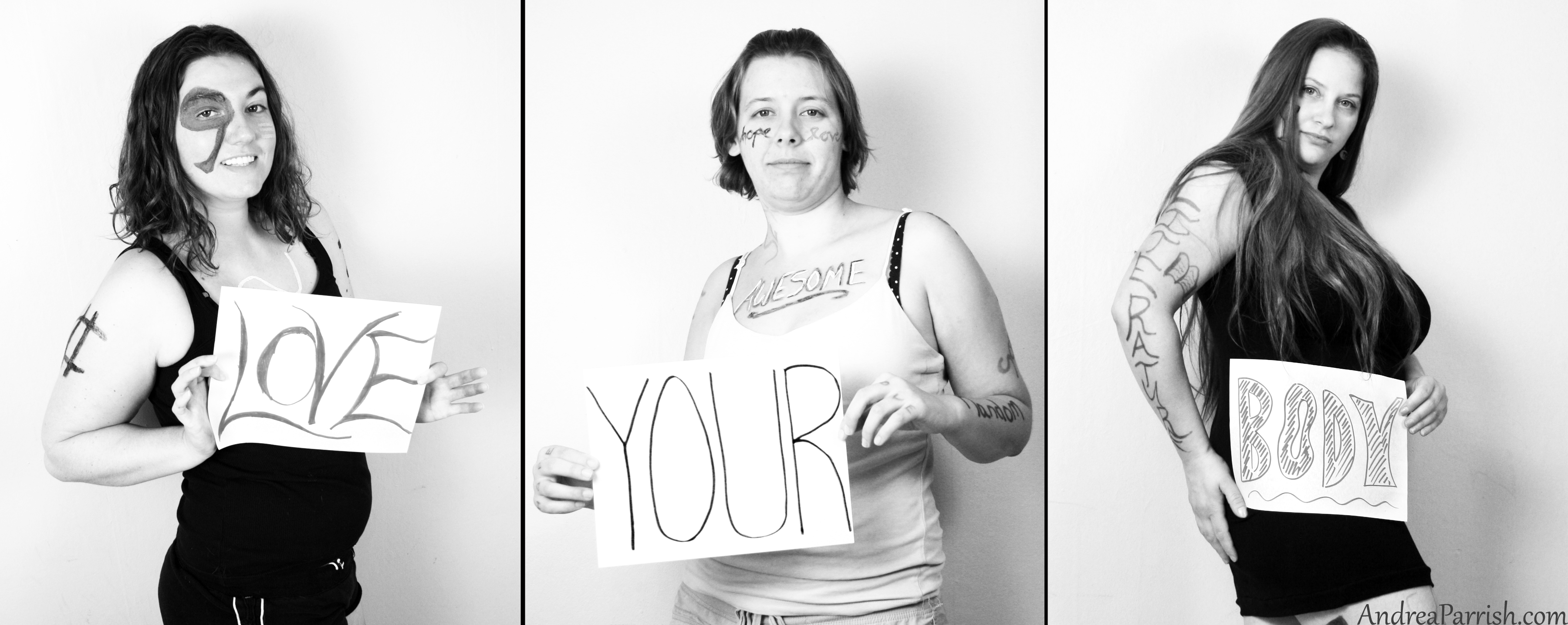Nicole Wegweiser Psychotherapy
|
Talk is Cheap by Nicole Wegweiser, LCSW
I have been working with Greg, a Hispanic man in his late 30’s, for approximately two years. Greg was recently laid off from his job as a programmer and was sharing today about his inability to do much of anything these days but sit on his couch and stare into space. He explained that he feels stuck and has been feeling this way for quite some time. Greg additionally struggles with his weight and in the past year has gained approximately 40 pounds. He experiences shame around his body and calls himself gross and disgusting. During today’s session, Greg discussed the things that have been holding him back from exercising and applying for a new job. His dissatisfaction with both his body and where he is in his career has caused him to feel depressed and socially anxious. Greg is also single and isolated. He has a history of unhealthy romantic relationships and grew up without his father in his life until he was 16 years old. Though Greg craves and thrives on human connection and relationships, he was describing symptoms of current agoraphobia that have prevented him from showing up to do much of anything this past week. Though Greg has presented with doom and gloom before, today was probably the worst I had seen him. He described feeling numb and his affect was flat. There was a dullness in his eyes and I began to feel like no matter what I said, it was not going to be enough to get him to snap out of this almost catatonic state. I knew I would have to get creative. I decided since Greg was so down and negative, and just so fed up with adulting, that we needed to have some childish fun. I started the fun by having him play the opposite game. So instead of Greg saying how unmotivated he was to apply for jobs due to the prospect of having to start new relationships with people he didn’t know, a thought that currently causes him a lot of anxiety due to his physical state he was forced to say “I am so excited to apply to jobs and make new relationships with people.” We played for a few minutes but it got old pretty quickly. I could see he was sinking into my couch and I could feel the heaviness in the room. I knew I had to try something else. I study and utilize Eriksonian hypnosis in my private practice and have spent the last couple years taking Jeffrey Zeig’s Master Class, last year in Boston, and this past year in NYC. I also have been participating in a weekly Psychodrama training/therapy group the past two years. Both are experiential forms of therapy that are in the here and now, and emphasize the importance of using the body. Rarely in either modality are you and your client sitting and talking. The limbic component is crucial to facilitate change. Experiencing something in our bodies, not just our minds, is how to tap into the unconscious processes that keep us resistant and stuck. I decided that it was time to move, and not just move, but dance! Okay so I did happen to have a couple of things working for me in that moment. First of all, I have a Sonos music player in my office and a subscription to Apple Music which allows me to access and play any song I want with good quality sound at a loud enough volume to make someone want to get up and dance. The second thing I have on my side is that I’m a very good dancer and comfortable performing. And lastly, my client LOVES music, is obsessed with it, is a musician himself, and had mentioned in the past having an interest in taking dance lessons. However, there were plenty of odds against me. It was bright daylight. My client said he can’t dance and refuses to, and there was a new client in the waiting room. I didn’t listen and asked him what his favorite song to dance to at home is when he’s by himself was. He was laughing, smiling, and eventually gave in and “Nerds Trying to Dance” by Pedestrian Tactics was requested. I danced to the entirety of the song and my client watched and laughed. I pleaded and practically begged him and eventually he stood up and as I began to try to engage with Greg, he sat right back down. I continued to dance and he again stood up just as the song was ending. I mentioned that I saw him stand up and I wanted Greg to get the chance to move. I was not giving up. We contracted that we would both dance to “Blind” by Hercules & the Love Affair as long as I danced with my back to him, because he said he was too embarrassed to do it any other way. One may be thrown off by my decision to do this with Greg, me being a woman, and Greg being a man, but I can assure you there was nothing sexual about this encounter. I put on the song and we danced, he wanted to stop about halfway through the song but I told him to follow my lead and he stayed with it for the entirety of the song. I gave him specific instructions to shake his hips, shoulders, and head, with the idea behind it that he had to let go of that stagnant energy and get out of his head. As much as I wanted to turn around and see what Greg was doing and interact with him, I knew that if I had, it would be over. Greg had an unexpected, surprising experience. And in that moment, he was full of joy and playfulness. Although I was trained in traditional psychodynamic therapy and spent years working that way, what I am realizing is that even though I can analyze the crap out of why people can’t seem to do the things that will bring them wellness and fulfillment, it very often does not facilitate change. If someone feels stuck, they actually need to move. Their body needs to have the experience of feeling unstuck so that their mind can follow. I have yet to hear how Greg has been doing since this last session, but something is telling me that he finally took the yoga class that he bought the clothes and mat for that is right next to his apartment this week, or maybe he applied for a job. At the very least, I know Greg had a lot of fun during his therapy session this week, we both did. And perhaps for right now, that is enough.
1 Comment
I’ve always struggled with the idea of creating New Year’s resolutions. It has always felt like a lot of pressure. And then once I figured out what my New Year’s resolution(s) were, somehow they did not happen. As a therapist and fitness instructor, I see many motivated good intentioned people come to therapy and the gym in January, and by February they are gone. So often we set unrealistic goals for themselves that are unachievable, unmanageable, unattainable, or unsustainable.
According to the dictionary, the definition of resolution is “a firm decision to do or not to do something” or “the act of solving a problem, dispute, or contentious matter.” Both of these definitions feel hard for me. The first one, “a firm decision to do or not to do something” can feel both rigid and definitive. What if one decides to try to do something and then realizes that it doesn’t work for him or her? What if a person has an intention to do things differently but for whatever reason isn’t able to follow through completely? Did he or she fail? Somehow it feels that this New Year’s Resolution has the very same possibility of someone feeling as though he or she is a failure when they can’t maintain whatever diet, exercise regimen, etc. that they have set for themselves. And the second definition “the act of solving a problem, dispute, or contentious matter” is great if there’s a problem in one’s life that they would like to acknowledge or address and change. But what if someone doesn’t feel that they have something they need or want to change. Or what if they have a problem that is unsolvable? Maybe acceptance is the answer that will bring resolve. Both of these points bring me to the idea that instead of setting a New Year’s Resolution that most likely we are bound to fail at, let’s set a new year’s intention. In fact, the New Year is not the only time we should be setting intentions for ourselves, we can do this daily. As a former yoga instructor and yoga lover, I always liked the part in the beginning of class in which we set an intention for our practice, and then at the end of class we came back and revisited it. It’s something that we can do before we eat a meal; spend time with a friend or family, or when we wake up in the morning and go to sleep at night. Being intentional allows us to be conscious not only of our choices, but our experiences, and allows us the opportunity to reflect on our experiences with awareness and presence. Instead of “New Year, New You” I challenge you to think “New Year, You.” Let’s be honest here. Just because the year has changed, does not mean that you have changed. And even if you are changing your habits, or setting the intention to change your habits, you still are you. It’s the consciousness, awareness, and intentions of improving oneself that I suggest we all focus on. Otherwise we have the probably chance of disappointing ourselves once again, feeling like a failure, and giving up altogether. Another idea I recommend is that if your goal is to lose weight, for example, instead of saying “my new years’ resolution is to lose 50 pounds,” say “my intention this year is to eat healthier and exercise more.” That way, even if you don’t lose the 50 pounds you intended to, but you did make an effort to eat healthier and exercise more, you are still successful. So, in closing…set intentions, rather than resolutions for yourself, and if you are going to set goals, make sure they are achievable and sustainable. This idea of self-improvement and reflection can be a wonderful thing if we feel successful at it. And if we set ourselves up for failure, it’s just another thing to feel bad about in 2017. Many times in our life we are hurt by others. We have relationships that are unfulfilling. We don’t feel heard. We feel it’s one sided. We don’t express how we feel. We feel taken advantage of. We feel misunderstood. We feel rejected. This is the nature of human relationships. And very often, the therapeutic relationship tends to bring up these feelings we experience in our outside relationships. And more often than not, when this happens, as in our lives, the therapy or relationship ends. It is so much easier for us to avoid and move on then to communicate our feelings. Why is this?
What would it be like for us to voice our feelings about what is not working in the relationship openly with the other person? Why is it so hard for us to do this? Most of the times we tend to fear that a confrontation could turn into an argument, so we choose not to do so. We are often told to pick our battles or that we can’t change others’ behavior. We often maintain relationships despite our hurts, and with each disappointment we create a little more distance. If the pain experienced is significant enough, it can end the relationship. And sometimes this happens without even trying to discuss whatever went wrong or what felt bad. We would rather end a friendship or relationship than work past our fears by showing our vulnerability. How sad is this? No wonder we tend to feel lonely, isolated, and misunderstood by others. So you can see how this might play out in a therapeutic relationship. Maybe there is something that you are not getting from your therapist, or feeling ambivalent about being in the therapeutic relationship for whatever reason. Instead of discussing one’s feelings with their therapist, the tendency is to miss appointments, cancel appointments, not show for appointments, or to terminate the therapy altogether for a variety of reasons, none of which have to do with your experience. I would like to invite you to do the uncomfortable and scary, and have a conversation with your therapist about your feelings. To share your disappointments or hurt in a safe and nurturing environment can be a reparative experience. I believe this conversation could be incredibly healing and empowering. It will not only help your relationship between you and your therapist, but the experience can make it easier for you to do so in your own life. With this honesty and openness, we will have deeper, richer, and more meaningful relationships. And at the end of the day, that connection with others is what we are all striving to attain. There has recently been a lot of research on the benefits of yoga and mindfulness in one’s overall physical and mental health, especially in combating anxiety and depression. My yoga practice has been an integral part of my journey towards spirituality, self-acceptance, compassion for others, and connection to the community at large. Through my yoga practice, I learned how to relax, feel more centered, and more grounded, both on and off the mat. Although I currently do not take yoga in the studio or have a daily mat practice, I can draw from these teachings of mindfulness, meditation, and breathing when needed in my own life. I teach clients these techniques in sessions so that they can utilize these tools in their own lives when feeling anxious, stressed, or angry, to replace unhealthy coping mechanisms that they may be using, or have used in the past.
But for this blog entry, I decided to interview a dear friend of mine who devotes her life to the practice of yoga, and is the founder and owner of Abhaya Yoga, a renowned yoga studio in Brooklyn. I asked her some questions about the practice of yoga and how people can integrate the practices into their daily lives. What is yoga? And why is it beneficial for people to practice it? Yoga is an integrated practice that connects the body, heart and mind. Yoga in its earliest forms referred to more meditative and philosophical practices oriented toward "union" with our manifest self and Spirit. In the last 1000 years, Hatha Yoga ( physical) emerged and demonstrated the importance of they physical postures to release blockages of "prana" or energy in the body. Through Hatha Yoga, one could find freedom in the body, ease the aging process, and be more connected to their eternal Spirit. In modern days, we see a conglomerate of physical, devotional, and philosophical yoga. Each of these facets may vary the "goal" is the same... to reconnect us, to help us feel alive, free, and grounded in who we are. Yoga is beneficial because it awakens and integrates each facet of our being; heart, mind, body. Studies show that slower more mindful movements have a greater impact on brain, body, and emotional health. What is mindfulness? How can a person use mindfulness to combat stress/anxiety? What is an example of a simple mindfulness exercise one can use in their daily life to do so? Mindfulness is simply becoming mindful in the present moment. The Yoga Sutras ( 1st Century Seminal Yoga text) teaches Atha Yoganusasanum, "Now is the time for Yoga". This idea of "NOW" is seen many modern teachings; Eckhart Tolle, Tony Robbins, etc. To be mindful is to fully connect to one's senses and feel and experience fully what is happening in the moment. In our culture we are often so preoccupied with what's next, we have a hard time living in the moment. Stress usually exists when thinking about the past or the future; mindfulness opens up the present moment. A simple mindful practice that can be done anywhere at any time (the subway, with kids, at a business meeting): Pause and take breath, ground yourself and feel your body. Tune into your senses. What do you see, what colors/ shapes/ forms, what smells do you smell, feel the quality of the air on your skin- the seat or feet touching the ground and the quality texture in your experience. Connecting to one's senses can be the simplest and best way for beginner meditators to become present. This exercise is highly effective for stress as well as since feeling through the senses calms the mind and the active nervous system. What is meditation? How can a person use meditation to combat stress/anxiety? What is an example of a simple meditation exercise one can use in their daily life to do so? Meditation is a practice of integration or absorption of mind, matter/ body, and Soul. Meditation is a very deep process and often when people feel extremely stressed, closing their eyes and sitting quietly can make them feel more stressed. It is important to have tools for meditation that can help ease the mind from highly active state to something more settled. As the mind and nervous system settles, one can find the peace that meditation can offer. Without some basic tools, the practitioner can feel like a can of Coke that has been shaken and then suddenly opened. A simple meditation exercise: Start with a comfortable upright seat in your chair, cushion, and couch. This is most important. If one feels comfortable close the eyes, if not, eyes down the tip of the nose and soft. Find an easeful sense of relaxation in the body. Start with a simple observation of the flow of breath. Watching the breath as it flows in and watching the breath as it flows out. When you feel distracted by thoughts, without judgment, return to the flow of the breath. Try this for 3-5minutes. Why can breathing be helpful to combat stress/anxiety? What is an example of a simple breathing exercise one can use in their daily life to do so? The breath is directly connected to the nervous system and endocrine system. If we are stressed, we probably have high levels of cortisol and adrenaline pumping through our system. My feeling the natural flow of the breath and slowing it down, deepening it, this will allow the adrenals to relax. The adrenals rest right above the kidneys and the kidneys are located in the back but opposite the diaphragm, which is the primary breathing muscle. Regulating a deep slow breath helps us utilize the diaphragm and move the breath down, therefore calming the adrenals. Simple Breath Exercise 1: Belly Breath - STEP 1; place your hands on your belly and allow your belly to distend on your INHALE STEP 2; let the belly and hands relax in on the EXHALE REPEAT FOR AT LEAST 1 MIN Belly breath is perfect for stress/ anxiety, digestion issues and sleepless nights. I always encourage my students to breathe with a "big buddha" belly for this one. It moves the blood flow down into the abdomen and out of the secondary breathing muscles of the chest and upper lungs. Part 2: 3 Part Breath Expanding the "Belly Breath" up through the entirety of the torso. Step 1, visualize the torso as a "vase" and as you breathe, the breath will fill from bottom up. EXHALE EVERYTHING OUT Step 2, Inhale into the lower abdomen/ belly/ low back - slight pause Step 3, Continue slow INHALE into the middle region of the torso- heart/ ribs/ mid back- slight pause Step 4, Continue slow INHALE into the upper region of the torso/ throat/ neck- slight pause Step 5, Big EXHALE through the mouth REPEAT 3 PART BREATH FOR AT LEAST 2-4MIN As you become more comfortable, you may lengthen the pauses, slow the breath in, and slow the exhale. If you feel like you are gasping for breath or becoming anxious, forget about doing the pauses with the inhale. Why is it important to connect the body and mind for optimal health and how can a person do that in their daily life? The body and mind are not separate. For optimal health we must feel the body and mind connected. In everyday life we can simply become aware of the how the mind affects the body and how the body affects the mind. How do we feel after a stressful day? It usually takes 24 hours for the cortisol and adrenaline to settle if we have had an extremely stressful situation. How does the body feel when sad or depressed? There is usually a solid connection. The first step to becoming a more integrated individual is to notice and become aware of what is happening between the body and mind ( and to do so without judgment). From, there the mindful and meditation practices above can be practices. Step 3, would be to include more "sattvic" or luminous qualities of the heart: trust, gratitude, and compassion toward oneself and others. Sweet qualities of the heart evoke an emission of "higher" gland secretions like oxcytocin and "love hormones". When there are more sattvic gland secretions, our thinking is more rational, digestion and elimination more effective, and we are more connected to one another universally. How did your journey of becoming a yogi/yoga teacher help you on your journey to achieve happiness and health? Becoming a yogi and from there a yoga teacher has helped me in my personal journey toward healing, happiness, and health but continually offering me a bridge to understand myself more deeply. The journey of yoga and mindfulness hasn't always been easy; it has sometimes been very sobering and very real. By helping others heal and move toward health, I am accountable also in my own life. As a leader and a teacher/ studio owner I am responsible to walk the walk and practice what I teach. There is nothing more healing than helping others to heal and become more fulfilled on their own path. I believe in and trust in the practices of yoga more than I can speak in words. Yoga saved my life and saved my connection to myself. When it seems as though the world is falling apart, the bridge of yoga has never left me and I have it as a life line to come back to again and again... for my students and for myself. As someone who suffers/ has suffered from anxiety and high stress, Yoga has grounded me and continues to help me anchor. When we are grounded, happiness, health come naturally. Tara Glazier, owner/founder and creative director of Abhaya Yoga since its inception in 2010 has 15 years experience teaching yoga, 10 years teaching therapeutic trainings, and a lifetime in her body as a dancer. In 2013 she codified The Abhaya Method as a way to offer a non-dogmatic approach to learning and unlearning new pathways toward healing and awakening. With a background and degree in Pedgagogy, she has a passion for the Art of Teaching and instills this love and skill into her trainings. She holds a BFA from the Hartt School, and is certified in Vinyasa and formerly Anusara as well as highly qualified in yoga therapeutics. In 2015, Tara founded the Abhaya Yoga Foundation which brings yoga and mindfulness to disadvantaged groups; scholarships to diverse groups for Teacher Training, and Women's Trauma and At-Risk Youth. For over 8 years, Tara has been training skillful, spirited, successful yoga teachers. After over fifteen years of being a part of the workforce, I can finally say I am truly happy in my career. I love being a therapist. After many years working in different career paths and in the field of social work, I feel so grateful to finally be able to do what I’ve always wanted to do.
It was not an easy road to get to where I am today, and when I think about how I was able to finally take the plunge to go after my dreams of opening up a private practice, I can honestly say, that I was the person that made it happen. I had to believe in myself to achieve my dreams. I know this is something that we hear quite often in life, but experiencing it myself made me realize the truth behind it. Sure it is helpful to have others believe in your ability, talent, and success, but at the end of the day, it is up to you to make things happen. I believe that self-doubt was probably the number one obstacle I had to overcome to make my dreams become my reality. Of course there were logistical, financial, and a variety of other concerns to going into private practice. However, if I continued on my path of not thinking I could do it, or that I wouldn’t be good at it, I would not be sitting where I am today. I had to convince myself that I am enough, even when those negative voices try to tell me otherwise. Believing in me was essential in making my dreams a reality. I know it’s not always the easiest thing to do, but after years of working towards it, I finally decided that I was capable and competent, as I knew this was and is my life calling. There may be very difficult barriers or circumstances holding you back from doing what you want. It may not be something you can do right away. But when there’s a will, there’s a way, and it’s up to you to go after what you want to achieve in your life. And if you’re having trouble getting there, you’re not alone. Keep working at it, never give up. Speaking to a therapist might give you the insight and tools you need to get there (after all, it was my own therapist who encouraged me to take the plunge into private practice.) The reason I share this with you is because I want to encourage each and every one of you to believe in yourselves and follow your dreams. If you are unhappy in a part of your life and want to make a change, the only person that can make it happen is you. If you feel fear about making this change or going after your dream, that is completely normal. The unknown is terrifying! We may only have one life to live (depending on your belief system) so there is no time like the present to make your dreams your reality. As Gandhi once said, "the future depends on what you do today." I recently attended a conference that focused on self-care and wellness. It was absolutely wonderful to spend a weekend doing yoga, movement, meditation, mindfulness exercises, drumming, massage, reiki, and acupuncture. I came home feeling rejuvenated, relaxed, and inspired to not only integrate these practices to my work with clients, but also to my own life. As I returned to my normal hectic life, although my intentions were still there, they began to dissipate, little by little, day by day.
Why is it that as mothers, fathers, therapists, teachers, and caregivers we nurture our children, ensuring that all of their physical, social, and emotional needs are met, yet when it comes to ourselves, it’s so difficult for us to do the same? I speak to so many adults who tell me that they don’t have time to go to a therapist, workout, cook a gourmet meal, read a book, take a bath, or meditate. And then when we do actually take time for ourselves to do something to promote our own self-care, many of us tend to feel a sense of guilt. Guilt that we are not spending time with our partners, guilt that we are not taking care of our children, guilt that we are not working, guilt that we are spending money, the list is endless. Many of us tend to focus on others' needs first, and putting our own self-care on hold. Furthermore, society often tells us that being a good mother, employee, or friend is about putting other peoples' needs before our own. What are the origins of this message? And how did it become so embedded in our psyches? Is it that we live in a society that tells us these things? Or is it learned behavior that has been passed down through generations? My guess it’s probably a bit of both. How can we break this cycle of meeting our own needs before others without being labeled as selfish? How can we truly care for ourselves in a nurturing and compassionate way without the guilt and shame that goes along with it? The first thing we need to start doing is truly listening to ourselves, that inner voice that tells us what would make us happy, calm us down, relax, and recharge us. Whether it’s taking a walk, a bath, watching a silly movie, or cuddling in front of the fireplace with a good book or magazine, take time for yourself daily. Even if it's for five minutes, check in with yourself, breathe, meditate, and relax. I also recommend that we focus less on is what others may think of us for making “me” time. Your true friends and loved ones will support your efforts and encourage you devoting time to self-care activities that promote your overall wellness. And the ones that you feel are judging you for doing so may be feeling deprived in their own lives. Modeling self-care for may inspire them to do the same. The time that we make for ourselves is invaluable, and I guarantee it will make you an overall happier and healthier person. We live in a diet culture we live in influences the way we think, feel, and talk about our bodies. The media bombards us with messages that thinness equals beauty, and the medical field tells us that being thin is equivalent to being healthy (which by the way, research has proven is not true.) We live in a digital world that constantly shows us images of women that are airbrushed and photo-shopped, bodies that are unattainable for nearly all women. Women’s bodies are objectified and sexualized in advertisements to sell us beauty products we don’t need, and diets that don’t work. Although we are born intuitively knowing how to feed our bodies eating when we are hungry and stopping when we’re full, we somehow unlearn this primitive instinct. We listen to our parents who tell us what we can eat, when, and how much as children. And as adults, we find diets to do the same.
I recently did a lecture for a group of teenage girls on eating disorders and body image issues. I was blown away by the amount of dislike each girl in the room had about their body. The girls that were overweight wanted to be thinner. The girls that were thin talked about the pressure they feel to gain weight. The girls that had straight hair wanted curlier hair. The girls with small boobs wanted larger ones. And the list went on…about all of the things they wanted to change about themselves. When I asked them to think about physical attributes about themselves that they liked, they found this to be a very challenging task. A couple of them couldn’t even name one thing. It was truly devastating to see a room of bright, beautiful, young, healthy women feel so bad about themselves and their bodies. I educated them about body acceptance for themselves and each other. I discussed the way “fat talk” can be toxic and how it promotes self-hate and eating disorders. I talked about how it is possible to love one’s body and nurture a positive relationship with their bodies and food. I shared the idea of intuitive eating instead of dieting to feed and nourish their bodies for optimal health. I relayed the importance of exercising for pleasure, not for burning calories. I left the workshop feeling satisfied about the message I was able to portray, yet unsure about its lasting impact on them. So how can we truly embody this message of loving ourselves despite the messages we receive that make us feel that we are not enough? Not pretty enough? Not thin enough? I think what works is different for each of us, but here are a couple of tips that may be helpful.
As the warm weather approaches, please keep these tips in mind. I promise that losing that extra weight to have your bikini body is not going to solve all of your problems and make you love yourself. It's finding that nurturing, loving, self-accepting relationship with yourself that will. I recently posted something on a parent group I participate on in Facebook with the intention of helping others. There was a tragedy in the community which I live, and being a therapist, I wanted to let people know about my services for those in need of counseling.
About a half an hour later I logged back onto Facebook to see what seemed like an endless trail of comments in response to my post. A couple of them were supportive, but the majority of them were quite the opposite. They were mean and hurtful. They were vindictive. I was accused of using a time of tragedy to drum up business. I was in utter shock and disbelief. As I read through the comments, there was a continuous thread of new posts being added. It was happening so quickly I didn’t know what to do. I quickly decided to write an apology post to those that were offended by my offering but seconds later; it was gone. All of it was gone. The entire post and all of its likes and comments were erased. It all happened so quickly, and at the blink of an eye, it was all like it never happened. People told me it was good that my post got deleted, that it would have only continued to get worse. Though that is probably true, I felt like my experience was taken away from me. I know that may seem odd, but after it was deleted, it almost felt like it never happened, like I could have been making it up. I started to question myself, did that really happen? The bottom line was that there was no proof of it. It was all gone. And all I could do was collect myself, and move forward with my day. I reached out to a couple of my friends in the group. Some had seen what happened and felt terrible. Others wanted to see what happened but there was nothing to see. All I could do was recount to them the fragmented memories left in my mind. It really put into perspective for me what our children are going through online. The Internet wasn’t around when I was growing up, so we had no choice but to bully each other in person, in writing, or on the phone. Now with the Internet, bullying is bigger, stronger, more powerful, and erasable than ever before. Being the victim of bullying is awful, end of story. But cyber-bullying is no joke. It happens so quickly, there are so many people involved (there are over 600 people in the group I posted on who all were able to see what happened,) and then it’s gone, erased, deleted, and over. Teenagers, who have five million things going on in their head at once, that have low self-esteem, who are trying to figure themselves out, have to deal with this as part of their daily experience. I think about the impact it had on me as a working professional adult and mother, but to think about if something like this had happened to my teenage self, it would have simply been devastating. Our poor children are suffering; hurting themselves and even killing themselves because they feel like the world is against them. My wish is that parents really think about the impact of what they post on others. What message are they sending their own children? As parents, it’s up to us to set the example. It’s time for us to take a stance against bullying, and the first step, is for us not to do it ourselves. It’s a wonderful thing when my family gets to sit down together and eat a meal together. I would love to say that I'm not checking my phone during our family breakfast, but that would be a lie. My husband and I both are navigating between responding to our kids’ questions, and checking our phones. Sure, it's not like we're just wasting our time solely scrolling through Instagram or Facebook; we are also checking and responding to emails, reading the news, and texting family or friends. But the more we are on our devices, the more disconnected we become from the present moment…quality time with our family.
On a date night with my husband, we do our best to go wireless but of course we want to check in with our sitter, my husband wants to check the score of whatever game he is missing, and so it goes on. The car ride to and from dinner often looks like this: my husband driving listening to something on the radio, while I am scrolling on my phone. I have a love/hate relationship with my device. I love that every time I want to know something I can pick up my phone and find out. I love that anytime I am feeling bored or lonely I can text someone or post something on Facebook and “connect” with others. I hate the dependency I have on my phone. I can't leave my home without it. I pick it up and look at it constantly. One might even say I'm addicted to it. But when I look around, at restaurants, parks, malls, I see that I'm not alone. Maybe we all are addicted? When we are connecting to others through our devices, we are missing the expression on each other's faces. We are missing important parts of what each other are saying to one another, we are simply not fully present. And what message are we sending to our children by doing this? We worry about their addiction to electronics, television, iPads, and yet we set the example. When I was growing up, there was no such thing as a cell phone. I think about how different my childhood and adolescence would have been if there were. So what can we do? What should we do? Like with any addiction, the first step is to recognize that there is a problem. Acknowledge that we just may be addicts to technology. Our children may also be addicted to their devices, television, videogames, and phones. We need to set limits and boundaries. We need to take breaks from our phone. We need to start looking at each other’s faces, look into one another’s eyes, and really listen to the people we are physically present with. We need to put our phones on silent and keep them in another room than the one that were in. We need to take walks or rides where we leave our phones at home. We need to stop being so co-dependent and be more mindful and present. These are all great tips, but we all know how hard they can be to put into action. But if we don’t do anything, we will continue detaching and disconnecting from each other, and miss important moments that are happening our lives that we will never be able to replace. As parents, we tell our children what to do. It is our job to set limits and boundaries,
and teach them how to behave and be respectful. I would imagine I bark orders at my kids at least twenty times a day. “Be nice to your sister,” “get dressed,” “sit up,” “chew with your mouth closed,” “clean up your toys” are just a few of the everyday utterances that leave my mouth. As a child being on the receiving end, I could imagine this may get frustrating. Nobody likes to be told what to do and just like us, children also have opinions, desires, and needs. And so the power struggle begins… I am constantly tested by my children’s demands and often contemplate how much say they are allowed to have. Do they get to choose what they want to wear in the morning, or do I? Do they get to pick what they want to eat for dinner, causing me to cook two, often three different meals? If they don’t want to do a planned activity, such as going to a soccer practice or friend’s house for a play date, do I give in to their request? Most of the time society tells us that as parents, we are in charge and need to maintain authority within the family. But an epidemic I have noticed are children acting entitled and disrespectful towards their parents, teachers, and coaches. I also notice that most children don’t just automatically respect their elders; instead, respect must be earned, which is different than it was generations past. So how do we earn our children’s respect? It’s simple, by respecting them. It is important that we truly listen to what our children. Listen to them the same way we listen to our partners and friends. Then after we listen, we need to let our children know that we’ve heard what they said. That might mean that we just repeat what they said, such as “I hear that you want to play longer, but it’s time to go.” Answering a child “because I said so and I am your parent” when they ask why can come in handy, and certainly has a time and place. But if we don’t allow a child to question the world they live in, we may be teaching them not to be curious. When we disregard our children’s feelings, or tell them we don’t care what they think, we may be sending a message to be silent, which in the moment can be effective. But the long-term impact of this may mean that we are raising our children not to speak up when they are bullied, assaulted, or mistreated. We may be raising young adults that do not have the resources to speak out for what they believe in, because they were never given the chance. We may be raising adults who cannot resolve a conflict because they are too frightened to speak their mind. As parents, we must teach children to trust themselves, and in order to do this; we have to validate their voice. That doesn’t necessarily mean giving into their every wish and demand. We all want what’s best for our children. We all try to do the best job we can. Ultimately, we will never be perfect. And that’s ok. |
AuthorNicole Wegweiser, LCSW Archives
March 2020
Categories |









 RSS Feed
RSS Feed